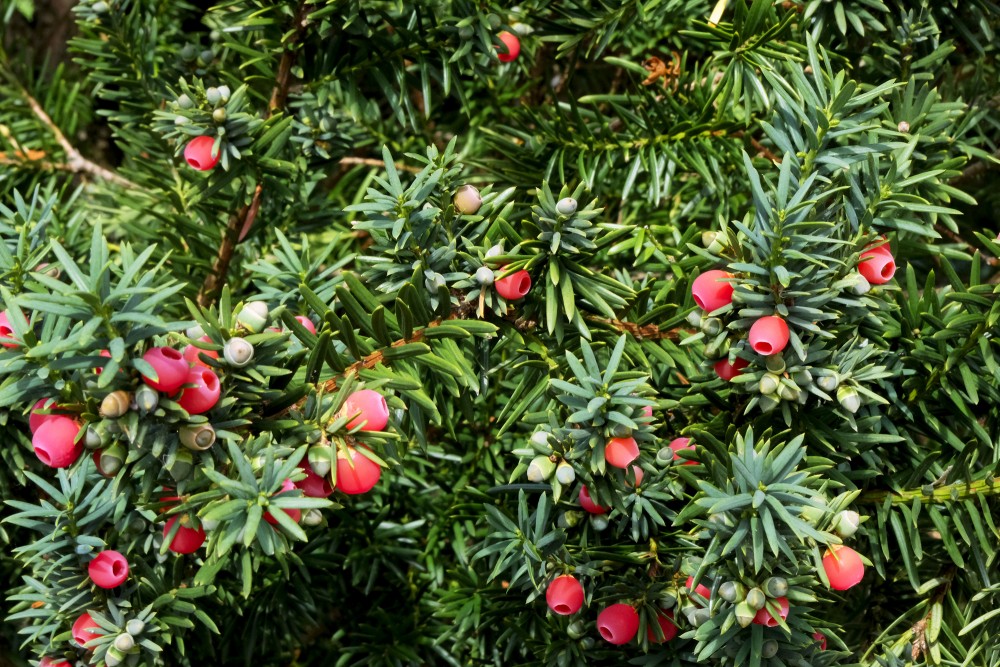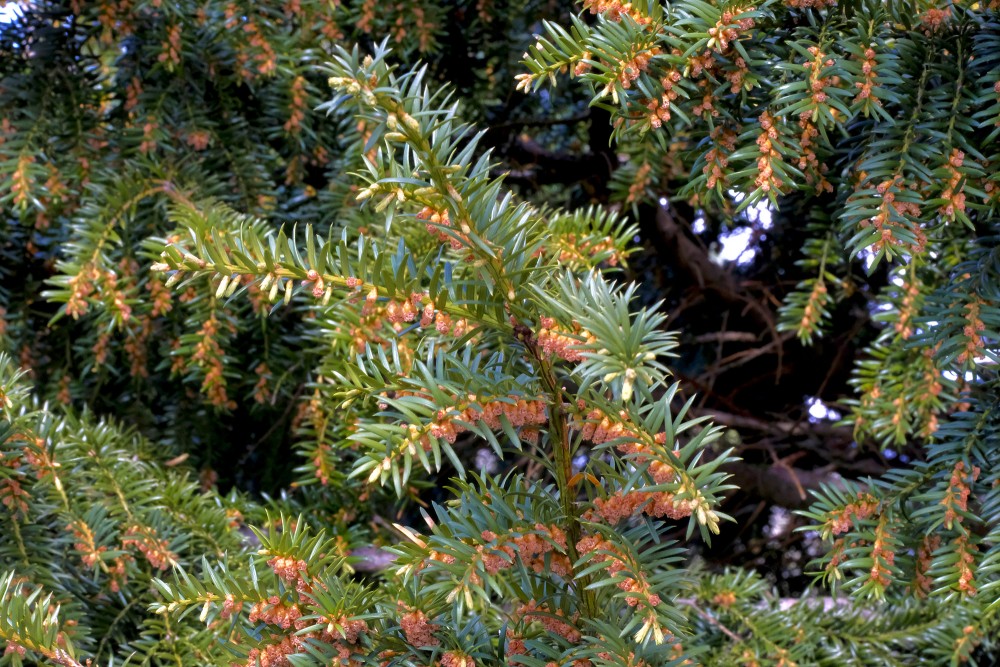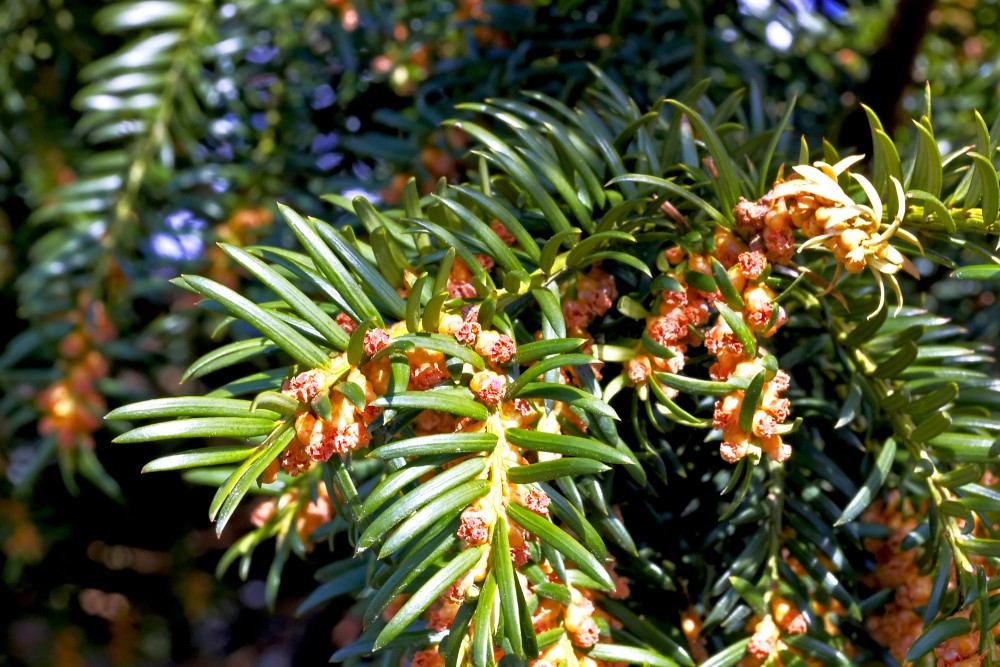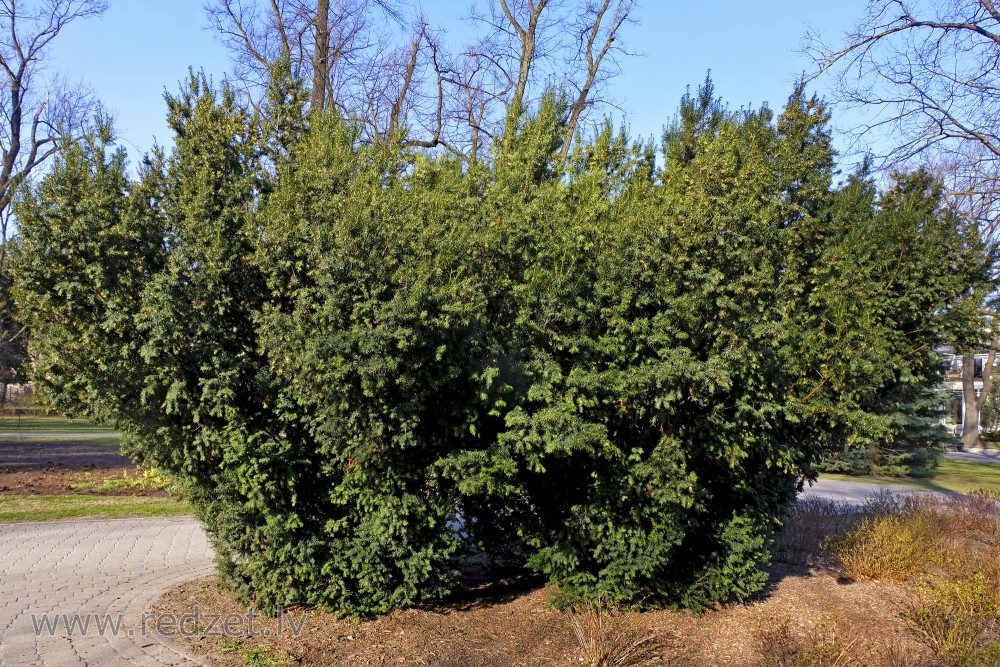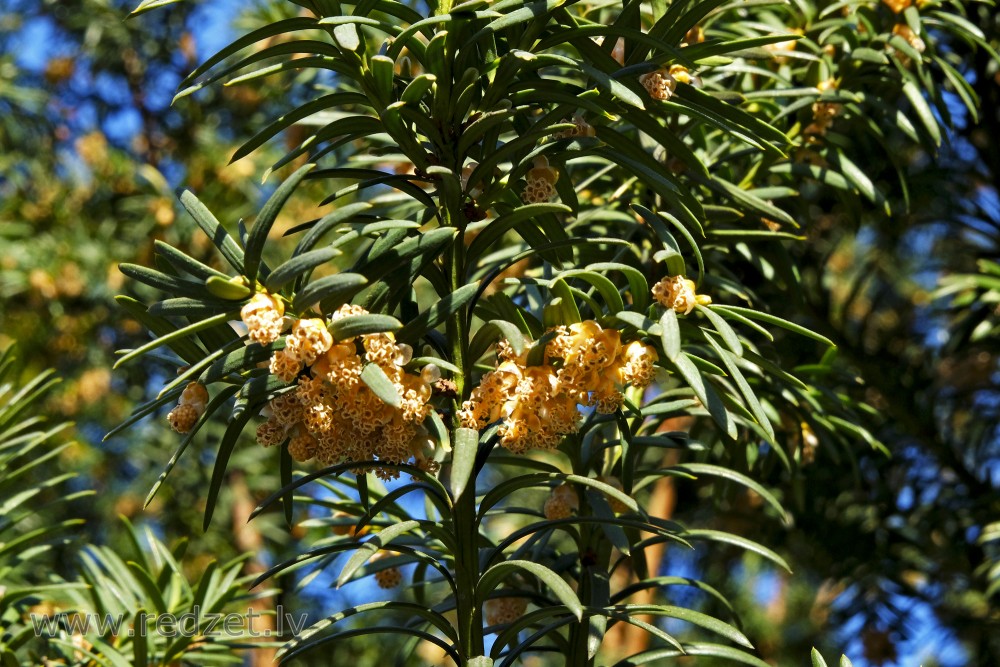Coniferous tree
The Pinophyta, also known as Coniferophyta or Coniferae, or commonly as conifers, are a division of vascular land plants containing a single extant class, Pinopsida. They are gymnosperms, cone-bearing seed plants. All extant conifers are perennial woody plants with secondary growth. The great majority are trees, though a few are shrubs. Examples include cedars, Douglas firs, cypresses, firs, junipers, kauri, larches, pines, hemlocks, redwoods, spruces, and yews. As of 1998, the division Pinophyta was estimated to contain eight families, 68 genera, and 629 living species.
Although the total number of species is relatively small, conifers are ecologically important. They are the dominant plants over large areas of land, most notably the taiga of the Northern Hemisphere, but also in similar cool climates in mountains further south. Boreal conifers have many wintertime adaptations. The narrow conical shape of northern conifers, and their downward-drooping limbs, help them shed snow. Many of them seasonally alter their biochemistry to make them more resistant to freezing. While tropical rainforests have more biodiversityand turnover, the immense conifer forests of the world represent the largest terrestrial carbon sink. Conifers are of great economic value for softwood lumber and paper production.
Foliage
Since most conifers are evergreens,the leaves of many conifers are long, thin and have a needle-like appearance, but others, including most of the Cupressaceae and some of the Podocarpaceae, have flat, triangular scale-like leaves. Some, notably Agathis in Araucariaceae and Nageia in Podocarpaceae, have broad, flat strap-shaped leaves. Others such as Araucaria columnaris have leaves that are awl-shaped. In the majority of conifers, the leaves are arranged spirally, exceptions being most of Cupressaceae and one genus in Podocarpaceae, where they are arranged in decussate opposite pairs or whorls of 3 (−4). In many species with spirally arranged leaves, such as Abies grandis (pictured), the leaf bases are twisted to present the leaves in a very flat plane for maximum light capture. Leaf size varies from 2 mm in many scale-leaved species, up to 400 mm long in the needles of some pines (e.g. Apache Pine, Pinus engelmannii). The stomata are in lines or patches on the leaves, and can be closed when it is very dry or cold. The leaves are often dark green in colour, which may help absorb a maximum of energy from weak sunshine at high latitudes or under forest canopy shade. The colors of the leaves can rub onto human skin and can lead to deadly rash. Conifers from hotter areas with high sunlight levels (e.g. Turkish Pine Pinus brutia) often have yellower-green leaves, while others (e.g. blue spruce, Picea pungens) have a very strong glaucous wax bloom to reflect ultraviolet light. In the great majority of genera the leaves are evergreen, usually remaining on the plant for several (2–40) years before falling, but five genera (Larix, Pseudolarix, Glyptostrobus, Metasequoia and Taxodium) are deciduous, shedding the leaves in autumn and leafless through the winter.The seedlings of many conifers, including most of the Cupressaceae, and Pinus in Pinaceae, have a distinct juvenile foliage period where the leaves are different, often markedly so, from the typical adult leaves.
Reproduction
Most conifers are monoecious, but some are subdioecious or dioecious; all are wind-pollinated. Conifer seeds develop inside a protective cone called a strobilus. The cones take from four months to three years to reach maturity, and vary in size from 2 mm to 600 mm long.
In Pinaceae, Araucariaceae, Sciadopityaceae and most Cupressaceae, the cones are woody, and when mature the scales usually spread open allowing the seeds to fall out and be dispersed by the wind. In some (e.g. firs and cedars), the cones disintegrate to release the seeds, and in others (e.g. the pines that produce pine nuts) the nut-like seeds are dispersed by birds (mainly nutcrackers, and jays), which break up the specially adapted softer cones. Ripe cones may remain on the plant for a varied amount of time before falling to the ground; in some fire-adapted pines, the seeds may be stored in closed cones for up to 60–80 years, being released only when a fire kills the parent tree.
In the families Podocarpaceae, Cephalotaxaceae, Taxaceae, and one Cupressaceae genus (Juniperus), the scales are soft, fleshy, sweet and brightly colored, and are eaten by fruit-eating birds, which then pass the seeds in their droppings. These fleshy scales are (except in Juniperus) known as arils. In some of these conifers (e.g. most Podocarpaceae), the cone consists of several fused scales, while in others (e.g. Taxaceae), the cone is reduced to just one seed scale or (e.g. Cephalotaxaceae) the several scales of a cone develop into individual arils, giving the appearance of a cluster of berries.
The male cones have structures called microsporangia that produce yellowish pollen through meiosis. Pollen is released and carried by the wind to female cones. Pollen grains from living pinophyte species produce pollen tubes, much like those of angiosperms. The gymnosperm male gametophytes (pollen grains) are carried by wind to a female cone and are drawn into a tiny opening on the ovule called the micropyle. It is within the ovule that pollen-germination occurs. From here, a pollen tube seeks out the female gametophyte, which contains archegonia each with an egg, and if successful, fertilization occurs. The resulting zygote develops into an embryo, which along with the female gametophyte (nutritional material for the growing embryo) and its surrounding integument, becomes a seed. Eventually the seed may fall to the ground and, if conditions permit, grow into a new plant.
In forestry, the terminology of flowering plants has commonly though inaccurately been applied to cone-bearing trees as well. The male cone and unfertilized female cone are called male flower and female flower, respectively. After fertilization, the female cone is termed fruit, which undergoes ripening (maturation).
It was found recently that the pollen of conifers transfers the mitochondrial organelles to the embryo, a sort of meiotic drive that perhaps explains why Pinus and other conifers are so productive, and perhaps also has bearing on (observed?) sex-ratio bias.
Conditions for growth
Conifers can absorb nitrogen in either the ammonium (NH4+) or nitrate (NO3−) form, but the forms are not physiologically equivalent. Form of nitrogen affected both the total amount and relative composition of the soluble nitrogen in white spruce tissues (Durzan and Steward 1967).Ammonium nitrogen was shown to foster arginine and amides and lead to a large increase of free guanidine compounds, whereas in leaves nourished by nitrate as the sole source of nitrogen guanidine compounds were less prominent. Durzan and Steward noted that their results, drawn from determinations made in late summer, did not rule out the occurrence of different interim responses at other times of year. Ammonium nitrogen produced significantly heavier (dry weight) seedlings with higher nitrogen content after 5 weeks (McFee and Stone 1968)than did the same amount of nitrate nitrogen. Swan (1960) found the same effect in 105-day-old white spruce.
The general short-term effect of nitrogen fertilization on coniferous seedlings is to stimulate shoot growth more so than root growth (Armson and Carman 1961).Over a longer period, root growth is also stimulated. Many nursery managers were long reluctant to apply nitrogenous fertilizers late in the growing season, for fear of increased danger of frost damage to succulent tissues. A presentation at the North American Forest Tree Nursery Soils Workshop at Syracuse in 1980 provided strong contrary evidence: Bob Eastman, President of the Western Maine Forest Nursery Co. stated that for 15 years he has been successful in avoiding winter “burn” to Norway spruce and white spruce in his nursery operation by fertilizing with 50–80 lb/ac (56–90 kg/ha) nitrogen in September, whereas previously winter burn had been experienced annually, often severely. Eastman also stated that the overwintering storage capacity of stock thus treated was much improved (Eastman 1980).
The concentrations of nutrient in plant tissues depend on many factors, including growing conditions. Interpretation of concentrations determined by analysis is easy only when a nutrient occurs in excessively low or occasionally excessively high concentration. Values are influenced by environmental factors and interactions among the 16 nutrient elements known to be essential to plants, 13 of which are obtained from the soil, including nitrogen, phosphorus, potassium, calcium, magnesium, and sulfur, all used in relatively large amounts (Buckman and Brady 1969).Nutrient concentrations in conifers also vary with season, age and kind of tissue sampled, and analytical technique. The ranges of concentrations occurring in well-grown plants provide a useful guide by which to assess the adequacy of particular nutrients, and the ratios among the major nutrients are helpful guides to nutritional imbalances.
Economic importance
The softwood derived from conifers is of great economic value, providing about 45% of the world’s annual lumber production. Other uses of the timber include the production of paper and plastic from chemically treated wood pulp. Some conifers also provide foods such as pine nuts and Juniper berries, the latter used to flavor gin.
en.wikipedia.org
https://en.wikipedia.org/wiki/Pinophyta
Continue reading